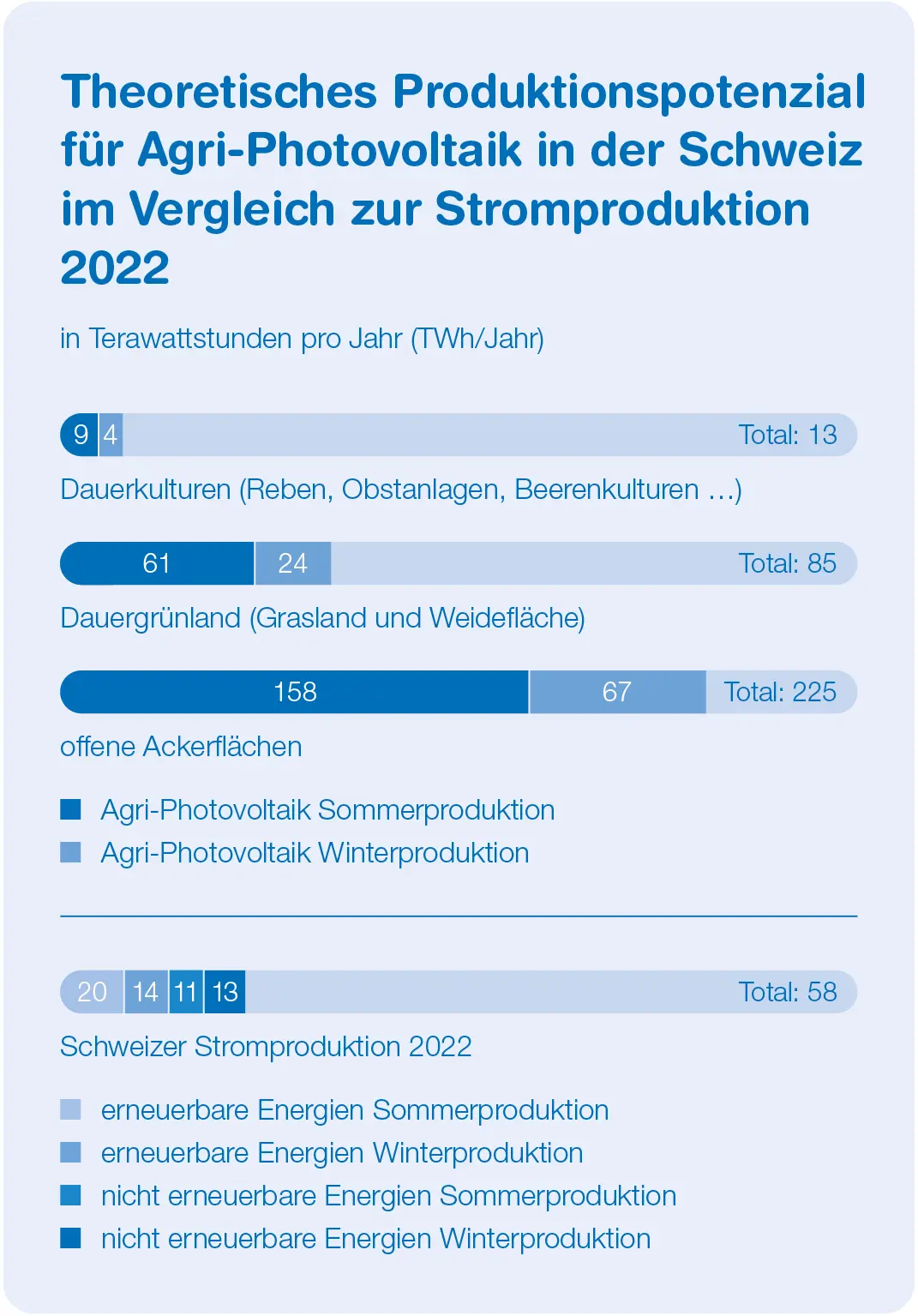Combining solar panels and agriculture has tremendous potential
Agrivoltaics could supply five times more electricity than Switzerland needs. ZHAW researchers now intend to investigate the impact on plant growth.
Grain and vegetable fields, pastures and orchards offer huge areas that, in addition to food, could also be used to produce electricity. Known as agrivoltaics, this practice could in theory deliver some 300 terawatt hours of energy per year – more than five times the amount of energy needed in Switzerland today. This was determined by a study conducted at the Institute of Natural Resource Sciences at the ZHAW School of Life Sciences and Facility Management with the support of the Swiss Federal Office of Energy. The study only considered areas that were located within 1,000 metres of building land, as distances to the electricity grid would otherwise be too far.
If using semi-transparent photovoltaic modules, in most cases plant growth wouldn’t be affected. On the contrary, some crops could even benefit, with the panels protecting them from heat, heavy rain and hail, in addition to reducing the need for pesticides and preventing evaporation and damages from low temperatures at night.
Experiment in Wädenswil
The researchers are now conducting a field experiment on the Grüental campus in Wädenswil to investigate these effects in greater detail. They have installed movable modules allowing for optimal alignment above a vegetable and a cereal field that spans some 2,000 square metres. Right next to it, they set up a control field without solar panels. The research team will now closely observe plant growth in both fields. Any gains in energy production cannot come at the expense of agricultural production, and the potential of agrivoltaics will also be limited by Swiss landscape conservation policies.
Benefits for farmers
“Even if only a small part of fields and grasslands are ultimately used for agrivoltaics, that would be an important contribution to the energy transition,” says Jürg Rohrer, Head of the Renewable Energies Research Group. “For farmers, it is a chance to generate additional income or cover their own energy needs in an environmentally friendly way.”
